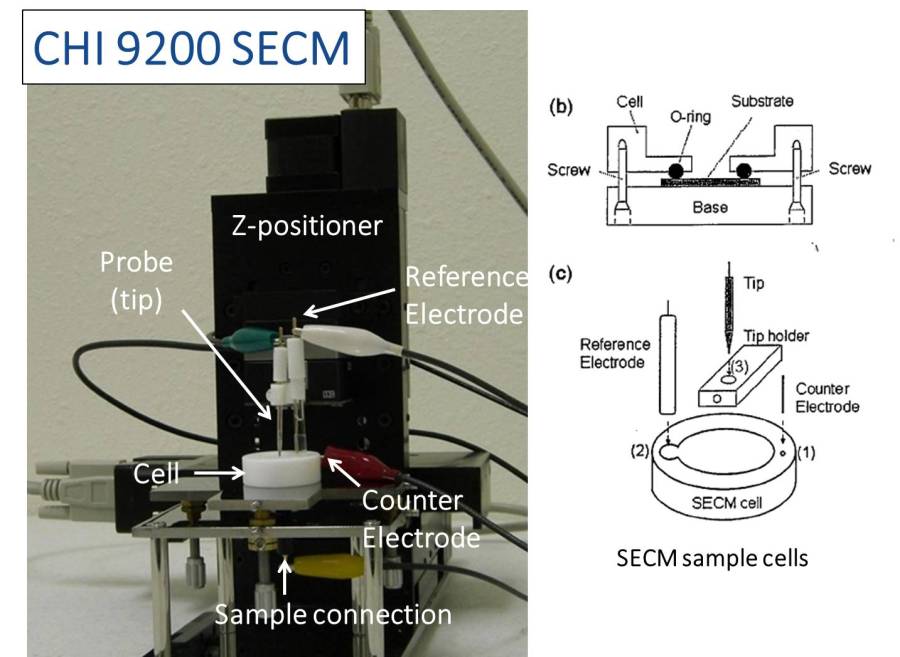Scanning electrochemical microscopy (SECM) is a powerful and versatile scanning probe microscopy technique capable of chemical imaging at the nano-micro scales. It has proven to be a valuable tool across the chemical, physical, and biological sciences.
Together with Prof. Yuan Yang in Materials Science, we oversee the operation of a CHI 9200 SECM that was purchased through the Columbia SEAS Research Equipment Assistance Program (REAP). This instrument is managed through the Chemical Engineering Department at Columbia and is open to all Columbia students and staff for use as a part of their research. You can find specifications of this instrument below, and a short overview of SECM and its uses in this presentation.
If you are interested in using this instrument, please email columbiasecm@gmail.com for more information and/or to set-up a training session.
CHI 9200 SECM- Specifications & Limitations
- Scanning capabilities w/ closed loop positioners:
- Minimum X,Y,Z step size: 1.5 nm
- Maximum X,Y,Z scan lengths: 50 mm
- CHI bipotentiostat (2 working electrodes)
- Measured current accuracy down to 0.1 pA (min. res. 0.3 fA)
- Impedance analyzer for EIS and impedance mapping.
- Compliance voltage: ±13 V
- Sample, electrolyte, & scanning restrictions:
- Roughness >> desired resolution is very challenging
- Samples must be stable in electrolyte (unless studying corrosion!)
- Electrolytes must be air-stable & safe for use in open lab
- Max scan speed is typically a couple probe radii per second

Photos and schematics modified from: http://www.chinstruments.com/chi900.shtml
CLP-SECM Image Reconstruction Code
In addition to the commercial CHI SECM, the Esposito Lab houses a home-built SECM with X, Y, Z, and rotational scanning capabilities as described in this paper published in Review of Scientific Instruments.
This microscope has been primarily used for imaging with non-local scanning band electrodes (i.e. continuous line probes or CLPs) that can be used to increase imaging rates by an order of magnitude or more for certain types of samples. Use of this non-local probe requires the use of compressed sensing (CS) to reconstruct images from the individual line scans generated by the CLPs, as described in the following publications:
G.D. O’Neil, H. Kuo, D. Lomax, J. Wright, D.V. Esposito, “Scanning Electrochemical Microscopy: Beyond the Point Probe”, Analytical Chemistry, 90 (19), pp 11531–11537, 2018. Download here.
A. E. Dorfi, J. Yan, J. Wright, D.V. Esposito, “Compressed Sensing Image Reconstruction of Scanning Electrochemical Microscopy Measurements Carried Out at Ultrahigh Scan Speeds Using Continuous Line Probes”. Anal. Chem., 93, 37, 12574–12581, 2021. Download here.
Most code used for the work reported in these publications has been made freely available at the following Github repository: